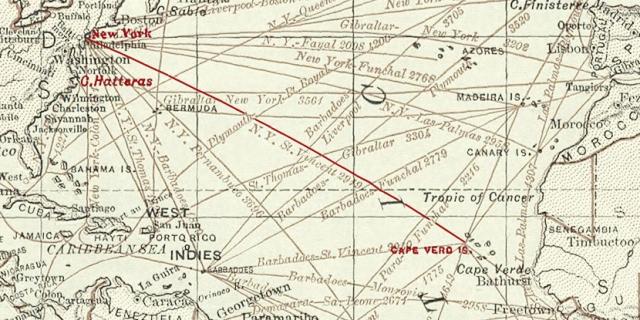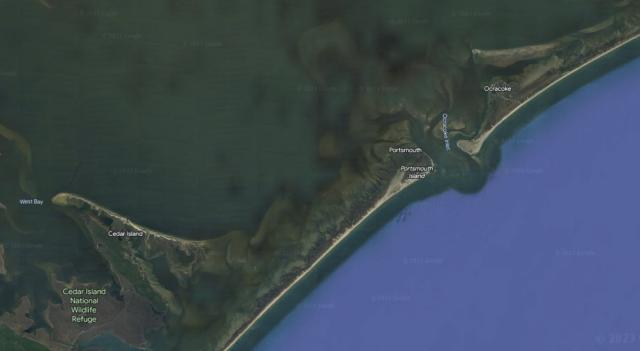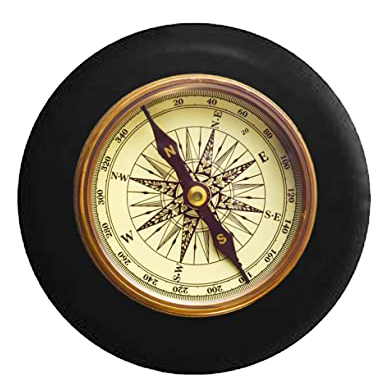Ver Cruz VII Stranded - May 8, 1903
The Vera Cruz VII was a 605-ton brig Portuguese ship that carried cargo that may have not wanted to be known. Why? On board was illicit liquor and nearly 400 immigrant passengers. Many rumors swirled around the Vera Cruz VII. First, it was mighty suspicious that the ship was so far away from the traditional shipping route from Cape Verde Island to New Bedford, MA. Ocracoke Inlet was way outside the route they would normally take.
 Steamship Routes Circa 1900 from Cape Verde Island
Steamship Routes Circa 1900 from Cape Verde Island
Another suspicious fact was that only 225 of the 399 passengers were listed on the ship's manifest. Some passengers reported that the captain, Julius M. Fernandez, told them they would be taken to the United States whether they had a passport or not. Finally, a number of people stated that a large number of fishing boats were seen in the area a few days before the ship ran into trouble. They believed that many of the boats were smuggling passengers through the North Carolina Sound. Some even suggested that the shop was wrecked on purpose in order to smuggle both passengers and liquor into the United States.
On May 8, 1903, at 2:00 PM, the Vera Cruz VII became stranded on Dry Shoal Point attempting to enter Ocracoke Inlet. The ship sent a distress signal and the Surfmen of the Portsmouth Life-Saving Station came to their rescue. When they arrived at the ship, the captain asked them to rescue 23 women, 3 children, and 10 men.
 Ocracoke Inlet, NC
Ocracoke Inlet, NC
However, that wasn't the end of the story. Four hours later, another distress signal was sent. Apparently, some type of disturbance arose among the remaining passengers still on board. All was quiet for the remainder of the day.
The following morning the weather began to get rough as winds increased and the surf began to rise. Once again the surfmen began to rescue the remaining passengers. With so many passengers still remaining on board and continuing rising seas, the eight men stationed at the Portsmouth Station were a bit overwhelmed, Seven villagers joined in on the rescue using two of the station's surfboats. They were able to bring the 371 passengers to the nearby Dry Shoal off-shore which was dry at low tide and disappeared during high tide.
From there other townspeople used their private boats to bring the passengers to the station. Fortunately, even with a rising tide, all passengers were brought to shore by midnight. The crew that remained on board eventually gave up on the ship and were removed from what remained of the ship a week later.
The rescue of passengers and crew was the largest single-vessel rescue in North Carolina history. When the passengers were brought to the Portsmouth Life-Saving Station there were only a couple dozen beds available. However, due to the decline in population post-Civil War, there were several homes in the village left vacant. The women and children remained at the station while the men were housed in the vacant homes. There was also a communication issue since the passengers only spoke Portuguese, while the residents spoke English. However, the villagers were able to feed and care for the passengers. Three days of expenses, barrels of flour to make bread, totaled $179.15 according to the Life-Saving Keeper, Terrell.
On May 11, the surfmen took the passengers' bags and part of the crew off the boat. On May 12, 416 people were taken along with their personal items on the US revenue steamer Boutwell to New Bern, NC.
The crew of the Portsmouth Life-Saving Station made a number of trips to the ship, at the request of the customs collectors during the following week. The crew took control of the vessel by the authority of the customs collector. Finally, on May 29th, the cargo of sperm whale oil was removed by a wrecking company, and the Vera Cruz VII was declared a total loss.
So what was the true story about what happened? It just so happened that the captain of the Vera Curz VII was able to slip away on the mainland before being able to be questioned.
